The second part of the Aviatik D.I preview (click here to see the Part 1) presents the pilots of the three versions of this fighter featured in the WW1 Wings of Glory Airplane Packs: the Austro-Hungarian ace Frank Linke-Crawford and two brave pilots, the Austro-Hungarians Karl Sabeditsch and Karl Turek.
Frank Linke-Crawford
Oberleutnant Frank Linke-Crawford was born in 18 August, 1893, and was the fourth-ranking ace of the Austro-Hungarian Empire during World War I, with 27 victories. He was born in Krakau (Cracow), in what is presently Poland. His father, Major Adalbert Linke, was a Galician soldier; his mother, Lucy Crawford, was British. Despite this mixed background, he was a citizen of the Austro-Hungarian Empire.
He entered the Wiener-Neustadt military academy in 1910. Upon graduation, he was commissioned as a Leutnant and assigned to the 6th Dragoon Regiment. Linke-Crawford first saw battle on the Russian Front. In November, 1914, he was appointed commander of the infantry troop of the Sixth Dragoons. Between October, 1914, and October, 1915, he received several decorations; he was also hospitalized several times with malaria and dysentery. In 1915, Linke-Crawford's fascination with the Luftfahrtruppen (Austro-Hungarian air service) led him to request a transfer for pilot training and, due in part to his poor health, his transfer was approved.
After starting as an observer during training at Wiener-Neustadt in March, 1916, Linke-Crawford was posted to Fliegerkompanie 22 to fly reconnaissance and bombing missions in two seater airplanes. In September, 1916, after six active months flying as an observer, he retrained as a pilot.
In January, 1917, he was transferred to Fliegerkompanie 12 on the Isonzo Front in northern Italy as chief pilot, which made him second-in-command of the unit. While his duties remained recon and bombing, he was now operating over mountainous terrain and flying some attack sorties in single seat fighters. During one of these missions, on April 13th, he shot down a Nieuport that cartwheeled into a crash far behind the Italian lines. On May 25th, his aircraft was badly shot up, taking 14 hits from a pair of Spad fighters.
He gained a reputation for courage. On one of his long range reconnaissance missions, he was attacked by an Italian Spad, which riddled his aircraft with 68 bullet holes over a half hour period, but he still completed his mission.
He piloted many different aircraft, from the Hansa Brandenburg D.I to the Aviatik C.I, and his experience as a pilot increased, fight after fight. On 4 August, 1917, he was transferred to Fliegerkompanie 41, situated near Trieste. The Austro-Hungary's most renowned air unit, it was commanded by one of the empire's top aces, Godwin Brumowski.
Linke-Crawford began wearing a scarlet flying helmet and white trousers when he flew, leading to the nickname of "Redhead." He decided to mark his airplane with falcons painted on either side.
Following his first victories in a Hansa-Brandenburg D.I, an aircraft with serious flaws, Linke-Crawford flew in an Albatros D.III. After piloting the Phonix D.I in the Flil 60 in the Northern Italy skies, he finally switched to an Aviatik D.I, obtaining seven victories in this aircraft, dueling and winning over superior aircraft such as the Sopwith Camel and Bristol F.2 Fighters.
On July 30 1918, the day after his final victory, he was flying an early model Aviatik (Berg) D.I in a formation of four. He was shot down in flames by a pair of Italian Hanriot HD.1 fighters, with his plane disintegrating before impact. Linke-Crawford had separated from his wingmen before engaging the Italians, but his airplane had spun out before engaging. He had recovered and been fired upon.
Linke-Crawford was accredited as Caporale Aldo Astolfi's sole success as a fighter pilot. Given the Aviatik was the first fighter manufactured entirely in Austria, with an initial reputation for wing failures during violent aerial maneuvers, there was suspicion Linke-Crawford had fallen afoul of a faulty airplane rather than an Italian pilot.
While the original Aviatik D-I design by Julius von Berg was sound, the Series 115 aircraft license-produced by the Lohner firm at Wien-Floridsdorf were notorious for failures along the wing trailing edges during high speed maneuvers (as Lohner had deviated from Aviatik specifications by employing thinner, lighter wing ribs). At the time of his death, Linke-Crawford was flying one of these defective machines, build number 115.32.
Although Frank Linke-Crawford was originally buried at Pobrežje Cemetery in Maribor, now Slovenia, after the war, in 1919, he was reinterred in Salzburg.
Karl Sabeditsch
In this series, you will find two other Aviatik D.I models, piloted by the pilots Karl Sabeditsch and Karl Turek. There aren’t as much info on these pilots, because they were not aces, but they were brave pilots who decided to challenge death during their fights in the skies.
Karl Sabeditsch piloted one of the first serial Aviatik D.I 38.01, and was the first to shot down an enemy aircraft with Aviatik D.I. The first serial Aviatik D.I was dispatched from Luftfahrdepot and delivered to elite Fluggeschwader I to Divacca airfield in 1917, at the Isonzo front, Italy, for combat tests.
The unit commander was Hptm. Karl Sabeditsch. Aviatik D.I model 30.19 (delivered with the 38.01) took off for its first combat mission equipped with a Schwarzlose machine gun, posed above the top wing canopy on 18th May. Flying the prototype, Hptm. Sabeditsch shot down an Italian Caproni bomber near Hermado on 23rd May. It was not only the first victory achieved by “Bergs,” but also Sabeditsch’s first notch.
Hptm. Karl Sabeditsch’s aircraft, which received a camouflage pattern on its rudder in June 1917, also shot down an Italian Nieuport fighter on 20th August, 1917. On the morning of 11th July, 1917, Sabeditsch, in model 30.19, escorted bombers raiding Cividale.
Hptm. Karl Sabeditsch, CO FliK 1J, was shot down on July 17, 1918, while piloting an Aviatik-Berg D.I, probably by his own AA in Le Bocche di Càttaro (Boka Kotorska).
Karl Turek
Karl (or Kàroly) Turek was a Hungarian pilot, Flik 74J, with a confirmed victory in the sky. He is the third pilot on the Aviatik D.I presented in this Wings of Glory Series.
There isn't much information on this pilot, except his aircraft was provided with an unusual camouflage pattern, created in the field and characterized by a white stripe on the fuselage with a black “Gothic T” inside, indicating the initial letter of his surname.
Hungarian documents say Turek was wounded in an air fight on 19th June, 1918.
Information sources: Military Machine, Wikipedia, First World War, Japo Publishing, Battles over Piave 1918

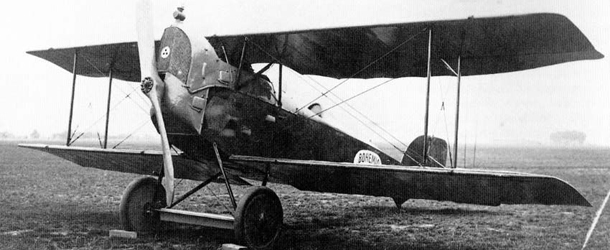
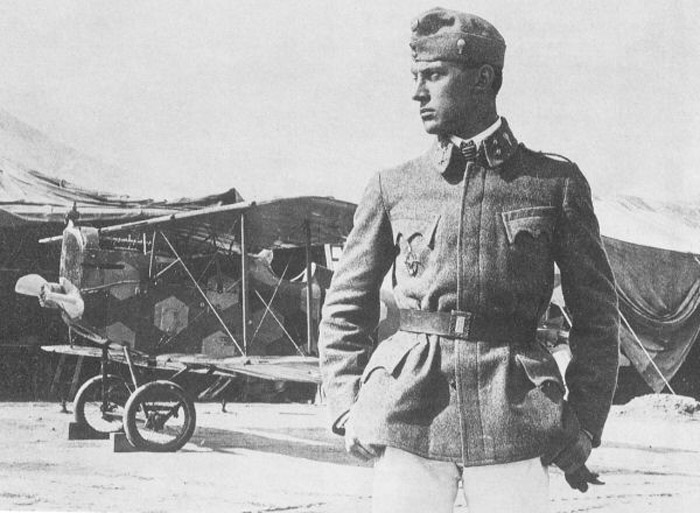
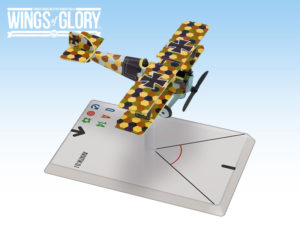
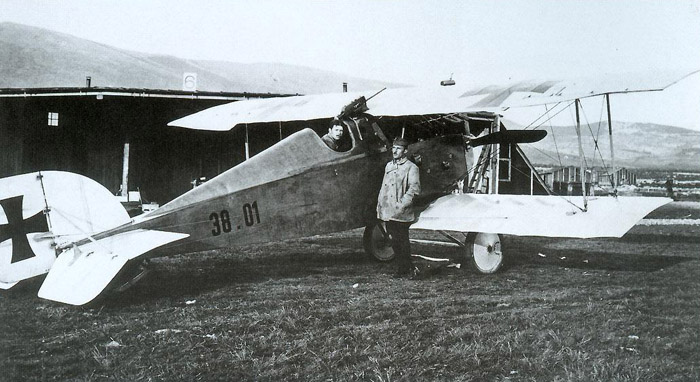
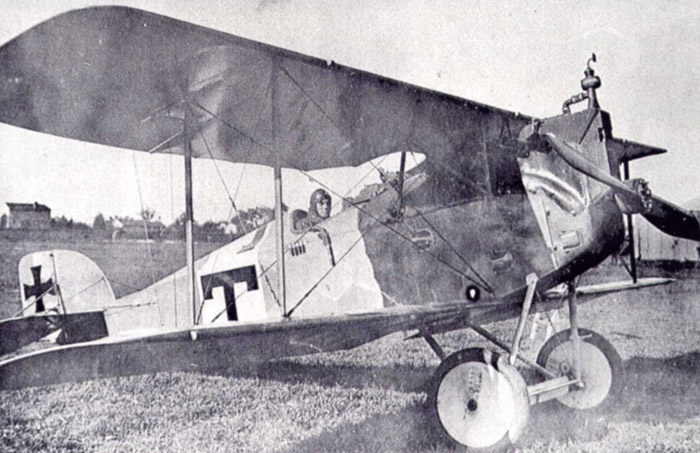







Follow Us on